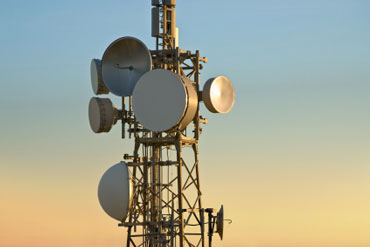May 30, 2013
Several important trends have emerged to drive the need for new WLAN solutions. The first is the increase and pervasiveness of mobile applications that require more bandwidth. A second and related issue is that more individuals are carrying multiple devices and consuming increasing amounts of network resources.
Coming soon to address these requirements is 802.11ac, the emerging standard from the IEEE. This will be a faster and more scalable version of 802.11n. This standard combines the freedom of wireless with the capabilities of Gigabit Ethernet. It is expected to be ratified by the end of 2013.
There will be a quantum leap in performance with 802.11ac. Wireless LAN sites will experience significant improvements in the number of clients supported by an access point (AP), and more available bandwidth for a higher number of parallel video streams. Even when the network is not fully loaded, users see a benefit: their file downloads and email sync happen at gigabit speeds. Also, device battery life is extended, since the device's Wi-Fi interface can wake up, exchange data with its AP, then revert to sleep mode that much more quickly.
802.11ac achieves its raw speed increase in three ways:
- More channel bonding, increased from the maximum of 40 MHz in 802.11n, and now up to 80 or even 160 MHz (for 117% or 333% speed-ups, respectively)
- Denser modulation, now using 256 quadrature amplitude modulation (QAM), up from 802.11n's 64QAM (for a 33% speed burst at shorter, yet still usable, ranges)
- More multiple input, multiple output (MIMO). Whereas 802.11n stopped at four spatial streams, 802.11ac goes all the way to eight (for another 100% speed-up).
In addition this standard will use beamforming to provide greater AP/client link reliability
802.11ac is a 5 GHz-only technology, so dual-band APs and clients will continue to use 802.11n at 2.4 GHz. However, 802.11ac clients operate in the less crowded 5 GHz band.
This standard has been designed to be forward and backward compatible with 802.11a/n devices. In fact, the 802.11ac design is even simpler and more thorough than 802.11n compatibility with 802.11a devices.
An 802.11ac device must support all the mandatory modes of 802.11a and 802.11n. So an 802.11ac AP can communicate with 802.11a and 802.11n clients using 802.11a or 802.11n formatted packets. For this purpose it is as if the AP were an 802.11n AP. Similarly, an 802.11ac client can communicate with an 802.11a or 802.11n AP using 802.11a or 802.11n packets. Therefore, the emergence of 802.11ac clients will not cause issues with existing infrastructure.
Second-generation products should also come with a new technology, multiuser MIMO (MU-MIMO). Whereas 802.11n is like an Ethernet hub that can only transfer a single frame at a time to all its ports, MU-MIMO allows an AP to send multiple frames to multiple clients at the same time over the same frequency spectrum. With multiple antennas and more built in intelligence, an AP can behave like a wireless switch.
Enterprise networks considering an investment in infrastructure Wi-Fi have two excellent choices: (1) buy 802.11n APs, since they deliver a remarkable level of performance, they are available today, and 802.11n is widely deployed in client products, or (2) wait for 802.11ac APs and their state-of-the-art performance.
Meanwhile, consumer-grade products might be launched earlier, but before Wi-Fi Alliance certification is available. However, we strongly recommend that all enterprises wait for products that are certified by the Wi-Fi Alliance as interoperable later this year.
Direct Network Services has the RF expertise to support both indoor and building to building requirements. For more information about how we can support your wireless requirements contact us at 978-952-6000 or email us at sales@directnetserv.com.
